Patterns among the most profitable movies budgeted $3m to $10m
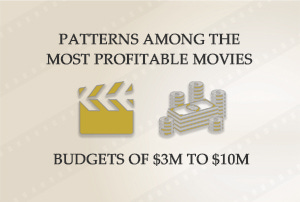
Today's article is another joint project with Bruce Nash from The Numbers. In a series of research studies for the American Film Market, we looked at what it takes for films to break out at different ends of the indie budget spectrum. We’ve looked at the most profitable low-budget films (with budgets under $3 million), those costing $10 million and $20 million, and also movies made for between $20 million to $50 million.
Now we will fill in the gap by looking at the most profitable movies budgeted between $3 million and $10 million.
As before, we reviewed all the films in Nash Information Services’ database in that budget range released between 2000 and 2016. We then identified the sixty most profitable movies, after accounting for all sources of revenue and estimating marketing and distribution costs. That gives roughly three films a year from the period under consideration. For more details of our methods and criteria, see the Notes section at the end of this piece.
This budget range makes up an important part of the independent film landscape. The budget is high enough to support hiring well-known actors and actresses, or to spend more on the “polish” of the film through (for example) acquiring rights to well-known music, building more elaborate sets, or filming in remote locations. However, the budgets are also low enough that every penny has to be spent wisely for the investment to show up on the screen.
The group of films that broke out at this budget level include some of the best indie films of the century so far, several of which earned Oscar glory. We see four distinct groups:
Character study dramas
High concept horror
Breakout documentaries
Crowd pleasers
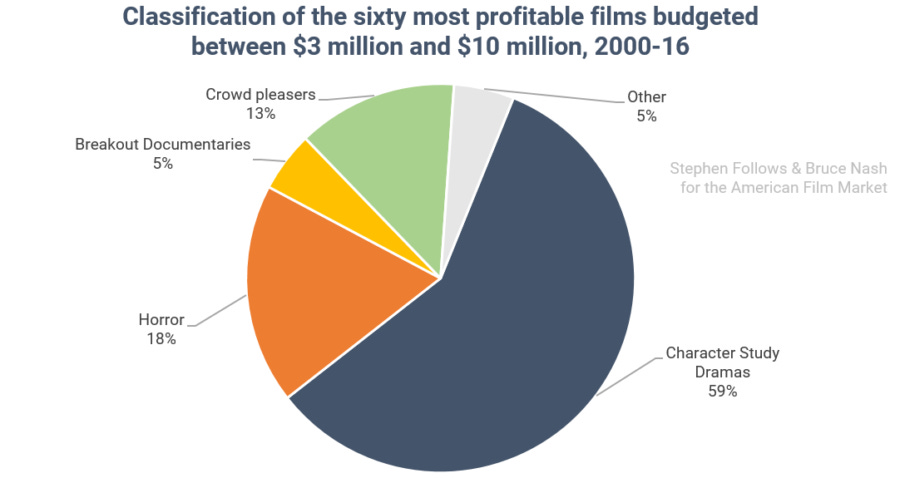
Let's look at each group in more detail.
Model One: Character Study Dramas
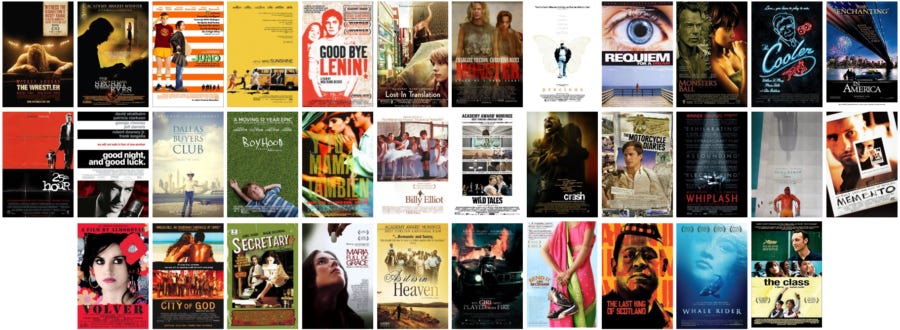
Almost 60% of the most profitable films budgeted between $3 million and $10 million are dramas that give an insight into the minds of interesting characters.
The majority of these films are dark in tone, complex in their plotting and eschew the traditional happy ending. However, this category is not completely devoid of sunshine – some films are uplifting despite their dark settings (such as Billy Elliot) and a handful are genuinely cheerful (such as Bend It Like Beckham). Many of them feature well-established actors or actresses who were drawn to the opportunity to stretch their skills on camera (and maybe snag an Oscar nomination).
All of these films have been well reviewed, with an average Metascore of 77 out of 100, and an average audience rating of 7.7 on IMDb.
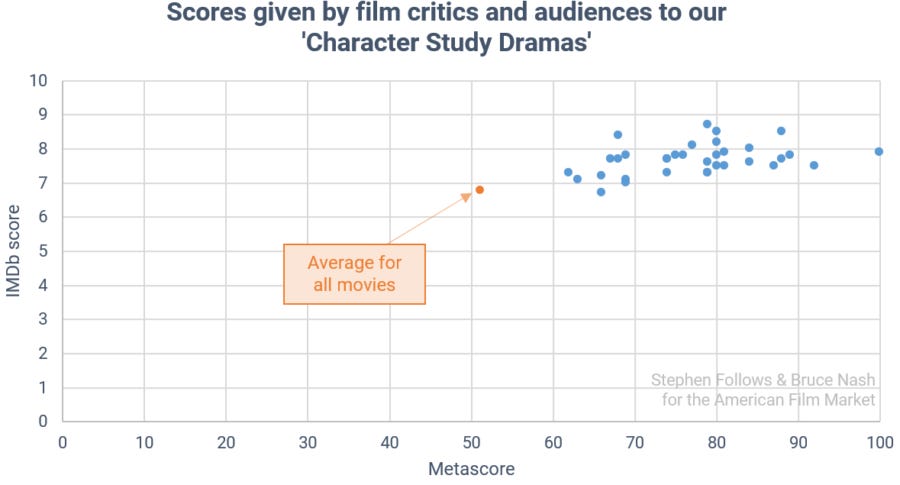
Model Two: High-Concept Horror
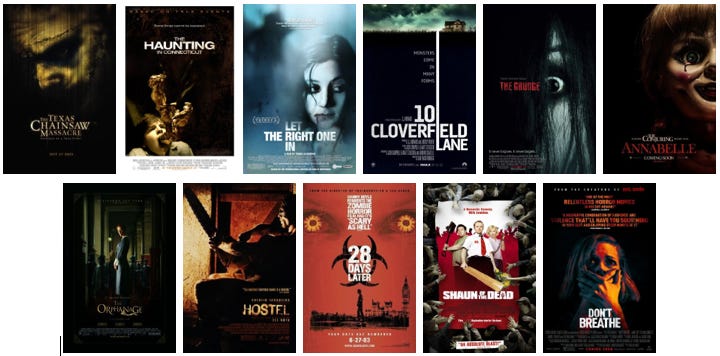
In a previous study, we found that horror films made up a large percentage of the most profitable films budgeted under $3 million, so it’s no surprise to see them also appearing on today’s list.
All have a very clear, simple premise that promises a dark, scary movie. Well, all except Shaun of the Dead, perhaps.
Model Three: Breakout Documentaries

Only three documentaries make our list, partly because not many documentaries cost over $3 million to make. These three films share two characteristics: they cost quite a lot to make by documentary standards, and they became cultural phenomena.
Excluding some long-running IMAX films, Fahrenheit 9/11 and March of the Penguins are the two highest-grossing documentaries of all time in the US, and the second- and third-highest grossing documentaries worldwide (after Michael Jackson’s This Is It).
Model Four: Crowd Pleasers

The final collection is that of movies which promise to deliver a fun time for a very specific audience.
These movies are likely to be best enjoyed with a group of friends or family who can directly relate to the characters on-screen. Note that the key element with all of these films is that the filmmakers knew exactly who they were making the film for. But also note that there’s virtually no overlap between the audiences for these films—this isn’t a case of finding the right genre, it’s a case of understanding exactly what your audience will like, and making a film to fit. At this budget range, that can be enough to make a very profitable film.
Analysis
Today’s budget range has the highest percentage of films that stray outside the mainstream. 35% were not produced in the United States, compared to just 5% of the most profitable films made on between $20 million and $50 million. In addition, these films are also much darker in tone than the most profitable films in other budget ranges. This is best illustrated by the MPAA rating, with 67% receiving an R rating.
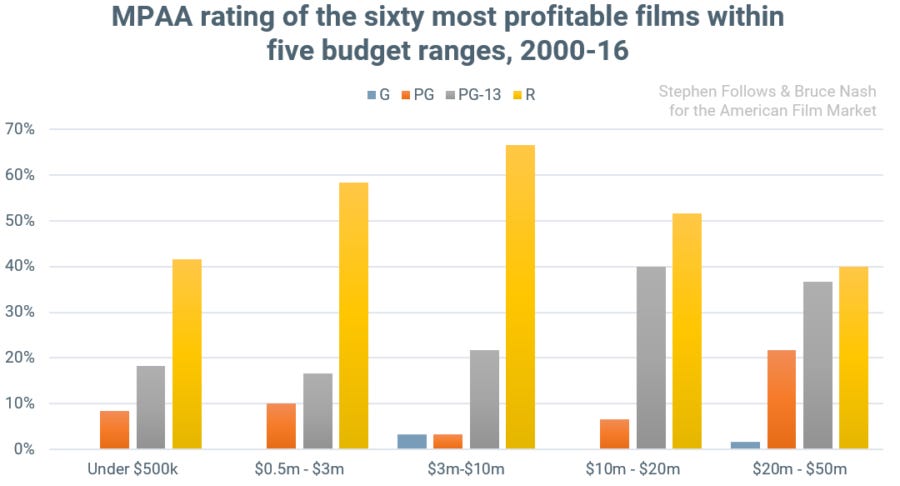
We’ve now run analyses of indie films budgeted all the way from $500,000 up to $50 million. In each budget range, we’ve found interesting groups of films that seem to work well at that specific budget range: faith-based films at very low budgets, age-reversal family comedies at the high-budget range, music-based films at the higher mid-budget range, and now niche crowd-pleasers at the lower mid-budget range. There are also a couple of types of movie that can break out at any budget level: very high-quality dramas and (at least up to about a $20 million budget) horror films.
Taken as a whole, we think the analysis reveals two important lessons for independent filmmakers:
First, think about your budget in terms of the audience you’re trying to reach, and make sure that you focus on that audience when making the film. Studios spending $200 million plus to make and market a film need to worry about reaching all four “quadrants.” But the films that we have seen breaking out have almost all worked by their appeal to a specific audience.
Second, with few exceptions, quality counts. As budgets increase, we’ve seen more well-known actors and actresses starring in the films, but, in the main, the talent has been drawn to the quality of the film or the chance to do something new. Getting a great story and a great script is the first important step to creating financial movie magic.
Notes
In order to conduct this study, we began with a list of over 3,000 films from The Numbers’ financial database, investigating full financial details, including North American (i.e. “domestic”) and international box office, video sales and rentals, TV and ancillary revenue. We narrowed our focus to study feature films released between 2000 and 2016 and budgeted between $3 million and $10 million. Finally, we calculated the likely profit margin for the producers, after all revenue and expenses were taken into account.
The financial figures come from a variety of sources, including people directly connected to the films, verified third-party data and computation models based on partial data and industry norms. It is possible that one or two of the individual figures are different to our predictions, though en masse we are confident of the larger picture.
Sequels were excluded as their success could be attributed to their existing audience. This affected Saw II, Saw III, Saw IV, Paranormal Activity 3, Paranormal Activity 4, Insidious Chapter 2, High School Musical 2 and Clerks 2.


